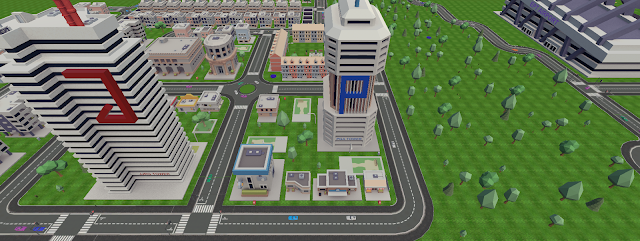SwarmCity was
an idea that came up during a conversation between my colleague Pablo and me in the summer of 2017. We did not stay
there, but planned to make it real: we shaped the objectives (a city, a
swarm and an interface) and formed a team with 11 people (a professor, 2 PhD, 2
MSc and 6 BSc students). During the academic year 2017-2018, we have been
working hard to develop the city simulator, swarm intelligence and control interface.
The next academic year we have a clear objective: Make SwarmCity great again!
You may ask... What
is SwarmCity?
Future cities will be
bigger and their management more complex, posing challenges related to the
traffic, management of resources, maintenance of green zones, pollution, etc.
The aim of this project is to provide a tool to collect the relevant
information of these cities to allow their authorities to make correct and
efficient decisions. The proposal goes further than the current solutions based
on fixed sensors, making use of an aerial robot swarm to obtain information at desired
locations and times. The work is focused on the development of swarming
algorithms to solve complex tasks through the combination of simple individual
behaviors, as well as data mining techniques and immersive interfaces for
processing and visualizing the information. Moreover, the scenario will be used
as a testbed for new algorithms designed to create an emergent and distributed
intelligence that will learn from the environment.
In other words, SwarmCity is
the sum of a smart city, a robot swarm and a control
interface:
- The smart city has
been developed by using Unity game engine. It is a simulator of a scaled
city that includes traffic, pedestrians, garbage, climate and pollution. It
is used not only as a view tool but also as a data source.
- The robot swarm has
to cover the city collecting data about the traffic jams, people crowds,
contaminant emissions... For this purpose, we are going to study
behavior-based architectures, multiple techniques of optimization, game
theoretical decision making...
- The control interface must
allow the operators to monitor the state of the city, as well as to
configure the swarm. For this purpose, we are going to explore data mining
techniques to discover information, machine learning algorithms to adapt
it to operator and immersive technologies to show it in a easy to
understand way.


